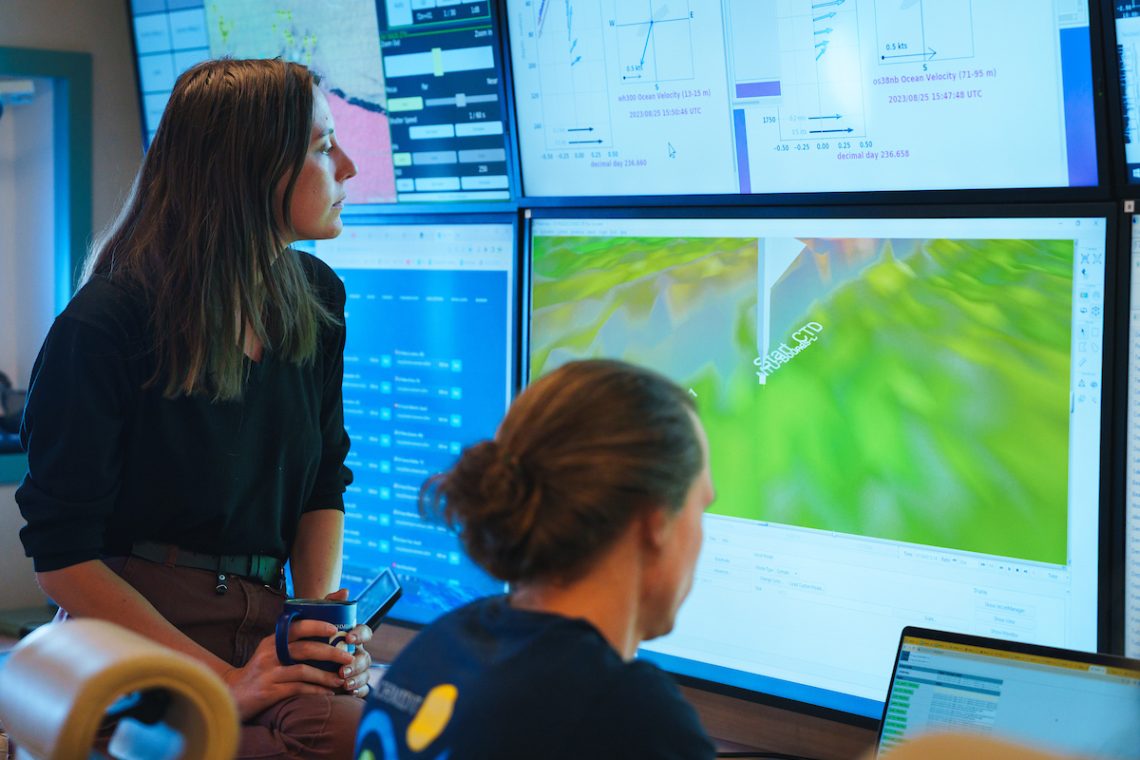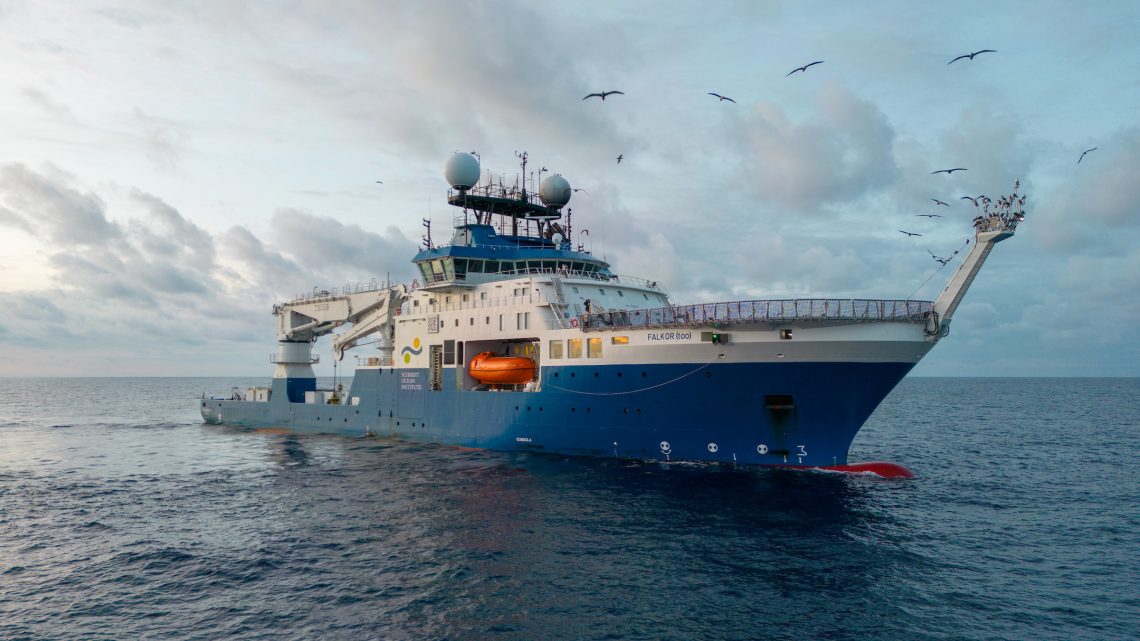Color-graded bathymetry of the seamount, rising from about 4,000m and
peaking at about 2,400m. Seafloor mapping during a Schmidt Ocean
Institute expedition has revealed an underwater mountain twice as high
as the Burj Khalifa, the world’s tallest building, in international
waters off Guatemala.
The 1,600-meter (5,249-foot) seamount covers 14
square kilometers and sits 2,400 meters below sea level.
From Schmidt Ocean Institute
Underwater mapping leads to discovery of seamount two times taller than Burj Khalifa
Seafloor mapping during a Schmidt Ocean Institute expedition has revealed an underwater mountain twice as high as the Burj Khalifa, the world’s tallest building, in international waters off Guatemala.
The 1,600-meter (5,249-foot) seamount covers 14 square kilometers and sits 2,400 meters below sea level.
Using the EM124 multibeam echosounder on Schmidt Ocean Institute’s exploration and research vessel Falkor (too), the seafloor feature was discovered 84 nautical miles outside the Guatemalan Exclusive Economic Zone during a six-day crossing this summer from Puntarenas, Costa Rica, towards the East Pacific Rise.
The Schmidt Ocean Institute on-board crew included a GEBCO-trained hydrographic expert, who confirmed that the seamount is not in any seafloor bathymetric database.
This marks the ninth seafloor discovery since the research vessel Falkor (too), was launched in March. Discoveries have included two additional uncharted seamounts in the Galápagos Islands Marine Reserve, three new hydrothermal vent fields, a new ecosystem underneath hydrothermal vents, and two pristine cold-water coral reefs.
“On every expedition, those aboard Falkor (too) have found the unexpected, the awe-inspiring, the new,” said Wendy Schmidt, co-founder and president of Schmidt Ocean Institute.
“On every expedition, those aboard Falkor (too) have found the unexpected, the awe-inspiring, the new,” said Wendy Schmidt, co-founder and president of Schmidt Ocean Institute.
“While there is so much we’ve come to understand as discoveries tumble ever faster into view, so much remains unknown in our Ocean–and we are thrilled to continue exploring.”
Seamounts are biodiversity hotspots, providing surfaces for deep-sea corals, sponges, and a host of invertebrates.
According to NOAA Ocean Exploration, recent satellite-based estimates indicate there are more than 100,000 unexplored seamounts taller than 1,000 meters.
With continued exploration and mapping of the deep sea, more accurate and higher-resolution maps will guide scientific research and future discoveries, while offering an improved understanding of geological processes.
“A seamount over 1.5 kilometers tall which has, until now, been hidden under the waves really highlights how much we have yet to discover,” said Dr. Jyotika Virmani, executive director of SOI.“ A complete seafloor map is a fundamental element of understanding our Ocean so it’s exciting to be living in an era where technology allows us to map and see these amazing parts of our planet for the first time!”
Mapping and exploring unknown areas of the seafloor is an essential element of understanding our planet. Since 2013, Schmidt Ocean Institute has mapped 1.44 million square kilometers of seafloor, discovering more than 20 underwater features.
Mapping and exploring unknown areas of the seafloor is an essential element of understanding our planet. Since 2013, Schmidt Ocean Institute has mapped 1.44 million square kilometers of seafloor, discovering more than 20 underwater features.
As of 2023, a map of almost 25% of the seafloor at a 100-meter or higher resolution is available.
 Hayley Drennon (Staff Assistant, Lamont-Doherty Earth Observatory) oversees the mapping of new areas as the team searches for undiscovered hydrothermal vents during a previous expedition on R/V Falkor (too).
Hayley Drennon (Staff Assistant, Lamont-Doherty Earth Observatory) oversees the mapping of new areas as the team searches for undiscovered hydrothermal vents during a previous expedition on R/V Falkor (too). “Yet another breathtaking discovery by the team onboard Falkor (too),” said Jamie McMichael-Phillips, director of the Seabed 2030 Project.
“We are hugely grateful to all at SOI for sharing essential information that will move us further towards our goal of delivering 100% seafloor mapping by the end of the Decade.”
Schmidt Ocean Institute is a partner in the Seabed 2030 initiative led by the Nippon Foundation and the General Bathymetric Chart of the Ocean (GEBCO).
Schmidt Ocean Institute is a partner in the Seabed 2030 initiative led by the Nippon Foundation and the General Bathymetric Chart of the Ocean (GEBCO).
Seabed 2030 and partners are accelerating ocean mapping efforts and working towards the ambitious goal of mapping the entire seafloor by 2030.
The absence of detailed underwater topography, or bathymetric data, hinders the ability to safely navigate vessels at sea, manage marine resources sustainably, and safeguard coastal communities.
Links :
- Schmidt Ocean Institute : Scientists Discover Healthy Deep-Sea Coral Reef and New Seamounts in the Galápagos
- MaritimeExecutive : Research Vessel Finds Mile-High Underwater Mountain
- GeoGarage blog : Coral reef taller than the Empire State Building discovered in Australia's Great Barrier Reef / Mapping Roatan's spectacular deep reefs / Strange ecosystem found thriving below seafloor hydrothermal vents







Hydro : Ocean expedition reveals towering seamount near Guatemala
ReplyDelete